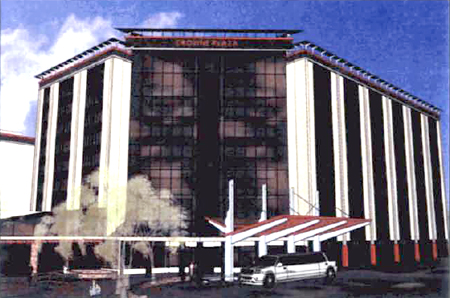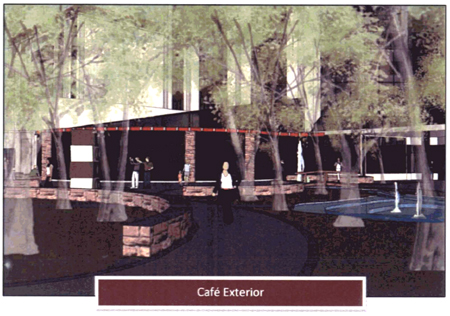
“Peoria Hotel Associates LLC is seeking partnership with the city of Peoria in a redevelopment plan for the revitalization and upgrade of the Holiday Inn City Centre.” So states a memo addressed to the Mayor and City Council members. The content of the proposal is very similar to the Marriott Hotel deal the council approved in December 2008, albeit on a smaller scale.
The redevelopment plan calls for the current Holiday Inn City Centre property to be “brought into the 21st century through a complete and comprehensive rehabilitation and renovation plan,” which would include upgrading the exterior, redeveloping the lobby and commercial space, changing 66 rooms into 35-40 suites, replacing Bennigan’s with an “upscale branded restaurant,” and changing the hotel from the Holiday Inn brand to either Crowne Plaza or Doubletree Suites.
The cost of the upgrade would be $10 million. The current owners of Peoria Hotel Associates LLC (d/b/a Holiday Inn City Centre) is Iowa-based Kinseth Hospitality Companies. According to the memo, they’ve already “maximized financing available through conventional bank lenders with a current loan in placee of $11,750,000.” So, they’re proposing this redevelopment “with the intent to participate in a city bond program similar to the redevelopment package that the current Pere Marquette Hotel is utilizing.”
We are requesting $8 million of financing similar to the Pere Marquette financing program with the goal of signing a redevelopment agreement very similar to the Pere Marquette/Marriott hotel redevelopment agreement. This will be coupled with a $10 mil New Market Tax Credit (netting $2 mil in cash). Listed below is a capital budget for our redevelopment process. We believe that the bonds will be paid through substantial sources of additional tax revenues that the city will achieve, including TIF, BDD taxes, BDD sales taxes, as well as substantial new taxes on the increases in revenues that we expect to achieve.
Cost Summary:
Exterior Upgrade $2,500,000 Lobby/Commercial Facilities $3,500,000 Restaurant & Bar re-concepting $1,000,000 Suites Conversion $1,000,000 Infrastructure/Systems $1,000,000 Meeting Rooms Upgrade $500,000 Brand Conversion $500,000 Total $10,000,000
You can read the entire memo and accompanying report here (warning: it’s a 7 MB PDF file):
![]() Kinseth Hospitality Memo and Report
Kinseth Hospitality Memo and Report
It’s not surprising to me that they would ask for a similar deal to the Pere Marquette/Marriott. And I fully expect the council to approve it whenever it comes to the floor for a vote. Once you open that door, everyone wants to come in and get their share of the money. It’s only a matter of time before a similar request from the Mark Twain appears.
It’s also not surprising that they want to dump Bennigan’s. The restaurant chain filed for bankruptcy last July, and Kinseth Hospitality recently filed a lawsuit against the franchise’s parent company for damages allegedly resulting from that bankruptcy.

UPDATE: The Journal Star now has the story you read here first, and they’ve interviewed a few council members. Funny, it’s one-fifth the cost of The Wonderful Development, yet the council members interviewed aren’t too keen on this new project. They cite concerns such as the amount of debt it involves and whether there’s enough market for that many upscale hotel rooms. Huh. I thought a project like this “pays for itself.” That’s what they said about the nearly $40 million bond for the Marriott. And as I recall, there were questions about the optimistic occupancy rates predicted in the Marriott project. Yet the council had no problem approving that project with next to no deliberation. I’m sure there’s a logical explanation.
